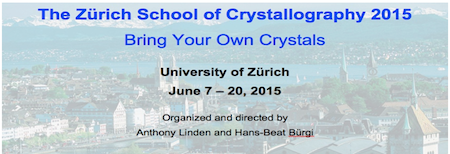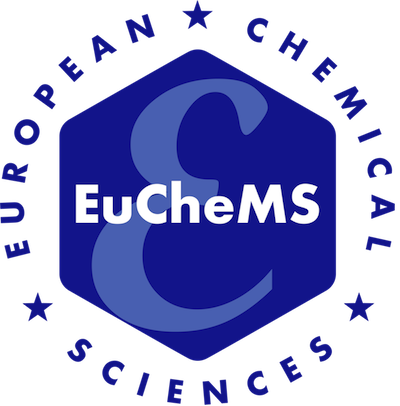Newsletter SCNAT Januar 2015
|
|
|
NEWS
Jubiläum SCNAT: Kampagne «Forschung live»
Anlässlich ihres 200-jährigen Bestehens macht die SCNAT im Jahr 2015 mit der Kampagne «Forschung live» die Bedeutung der Naturwissenschaften für unseren Alltag mit einer vielfältigen Tournee nachhaltig erlebbar. Drei interaktive Installationen, sogenannte „Einsichten“ touren durch 12 Standorte in der Schweiz, vermitteln die Aufgaben und Bedeutung der Naturwissenschaften und machen auf das regionale naturwissenschaftliche Freizeitprogramm aufmerksam. Darüber hinaus wird eine App als digitale Freizeitführerin lanciert. Mehr Informationen Portal Naturwissenschaften Schweiz Das neue Webportal Naturwissenschaften Schweiz stärkt die Webkommunikation naturwissenschaftlicher Organisationen in der Schweiz. Die Bündelung von Meldungen, Publikationen und Veranstaltungen auf einer einzigen Plattform ermöglicht einen schnellen Überblick. Themenportale bringen Informationen direkt aus der Wissenschaft: umfassend, relevant, korrekt und zitierbar.
Rund 40 Organisationen sind bereits Teil des neuen Portals, das von der SCNAT betrieben und weiterentwickelt wird. Werden auch Sie Partner des Portals Naturwissenschaften Schweiz! Wenden Sie sich bei Interesse an den Chefredaktor Pascal Blanc (, 031 310 40 93). Er wird Sie gerne beraten.
Die Akademie finden Sie weiterhin unter www.scnat.ch, neu integriert im Portal www.naturwissenschaften.ch.
Folgen des Klimawandels im Nationalpark unübersehbar
Synthese von 100 Jahre Forschung im Schweizerischen Nationalpark Vor 100 Jahren gründeten Forschende den Schweizerischen Nationalpark im Engadin. Welche Erkenntnisse die Forschung in dem weltweit einzigartigen Freiluftlabor gewonnen hat, fasst die Forschungskommission nun im Buch «Wissen schaffen – 100 Jahre Forschung im Schweizerischen Nationalpark» zusammen. Prix de Quervain 2014: Neue Form des Höhentrainings entwickelt
Wie lässt sich die Leistungsfähigkeit von Sportlern steigern? Raphael Faiss von der Universität Lausanne hat im Rahmen seiner Dissertation eine neue Höhentrainingsmethode entwickelt, für welche er mit dem Prix de Quervain 2014 ausgezeichnet wurde. Die schweizerische Kommission für Polar- und Höhenforschung der Akademien der Wissenschaften Schweiz hat den Preis am 14. November im Alpinen Museum in Bern verliehen.
«Chemie mit Globi» neu auf Französisch
Das Kindersachbuch «Chemie mit Globi» erschien zum internationalen Jahr der Chemie 2011. Auf vielseitigen Wunsch wurde es nun auf französisch übersetzt! Für alle Kinder (und Eltern) die schon lange wissen wollten, wie Leim oder ein Riesengummibärchen gemacht wird. Für alle, die gerne mehr verstehen möchten von der Welt, die uns umgibt. Das Buch aus der «Wissen»-Serie der Globibücher lädt Kinder ab dem ersten Lesealter ein, zusammen mit Globi die Chemie zu entdecken. Die französische Ausgabe «La Chimie avec Globi» ist vorerst nur über den Verband Interpharma erhältlich. Die deutsche Ausgabe finden Sie im Buchhandel (ISBN: 978-3-85703-007-9). |
|
AGENDA
16. Januar 2015, UniS, Bern SWIFCOB 15 «Biodiversität und Politik: Vielfalt bewegt» Biodiversität ist in der Politik in den letzten 20 Jahren zum Thema geworden – auf internationaler und nationaler Ebene, aber auch in den Kantonen und Gemeinden. Sie steht allerdings selten im Zentrum, und meistens unterliegen Bemühungen für die Erhaltung der Biodiversität bei Interessensabwägungen. Wie kommen politische Entscheidungen zustande, und welches sind die Mechanismen und Möglichkeiten, bei diesen Entscheidungen Biodiversitätsaspekte einzubringen? Diesen Fragen geht die Tagung SWIFCOB 15 «Biodiversität und Politik: Vielfalt bewegt» des Forum Biodiversität Schweiz vom 16. Januar 2015 in Bern nach. Anhand von konkreten Beispielen wird diskutiert, wie es gelingen kann, die Erhaltung, Förderung und nachhaltige Nutzung der Biodiversität verstärkt im Tagesgeschäft der verschiedenen politischen Sektoren zu verankern. 27. Januar 2015, UniS, Schanzeneckstrasse 1, Bern Neue Pflanzenzuchtverfahren – Nutzen und Herausforderungen Die öffentliche Tagung bietet einen Überblick über die Bedeutung und die Praxis der heutigen Pflanzenzüchtung. Im Fokus stehen neue Zuchtverfahren, die auf der Molekularbiologie und Gentechnik aufbauen. Das Potential dieser neuen Verfahren zur Verbesserung von Nutzpflanzen sowie Fragen zur Sicherheit und Regulierung werden vorgestellt und diskutiert. Weitere Informationen 29. Januar 2015, Wirtschaftswissenschaftliche Fakultät, Universität Basel Nachhaltige Ressourcennutzung – Von der Evidenz zur Intervention
Die Ressourcenproblematik kann nicht allein technisch bewältigt werden. Es braucht Massnahmen auf der Individualebene (Verhalten), der gesellschaftlichen Ebene (Strukturen, Governance) sowie im ökonomischen Bereich (Kreislaufwirtschaft, Entmaterialisierung des Konsums). 29.-30. Januar 2015, Universität Zürich, Campus Irchel
Willkommen zum LS2 Annual Meeting 2015! An alle Forschenden und Interessierten der Naturwissenschaften: Hiermit laden wir sie herzlich zum LS2 Annual Meeting 2015 in Zürich ein. Dieses Jahr bieten wir neben renommierten internationalen plenary speakers ein vielfältiges Spektrum an wissenschaftlichen Symposien in den Life Sciences, sowie eine Ausstellung neuester Technologien unserer Industriepartner. Zur Abrundung des Programms finden viele events zur Karriereförderung junger Wissenschaftler statt, u.a. “Non-academic careers in Science”, “Networking in Science”, “Careers of Women in Academia” und “Publishing in the 21st century”. Mehr Details zum Programm finden sie unter: www.ls2-annual-meeting.ch. Bis bald in Zürich! 10. Februar 2015, Basel Learning mobility for mutual benefit: Perspectives of sending institutions in South and North
This afternoon workshop offers experts and stakeholders in student mobility, exchange programmes and joint study programmes a platform for exchange and networking. It addresses the potential and challenges of learning mobility between the ‘Global South’ and the ‘Global North’. The focus will be on the requirements concerning partnerships and the institutional setup for successful learning mobility to the benefit of both sides. Presentations will address the expectations and challenges, institutional processes and organizational enablers, good practices and lessons learned from the perspective of sending institutions. The workshop is organised by LEMONOC together with the International Office of the University of Basel, the Centre for African Studies Basel (ZASB) and the Swiss Commission for Research Partnerships with Developing Countries (KFPE). bis 30. März 2015, Anatomisches Museum Basel, Pestalozzistrasse 20 Dem Körper auf der Spur. Von Andreas Vesal bis heute – 500 Jahre
Interaktiv und in die virtuelle Welt eintauchend, bietet diese Ausstellung eine Reise durch die wechselvolle Geschichte der Anatomie mit ihren Höhen und Tiefen. Sie können hier eine Auswahl von Bildern, Objekten und Zeugnissen der Vergangenheit und Gegenwart, zwischen Kunst und Wissenschaft, zwischen Medizin und Gesellschaft entdecken. Im Mittelpunkt steht das Wirken des Arztes Andreas Vesalius (1514-1564), einer der Begründer der modernen Anatomie,
dessen 500. Geburtstag 2014 gefeiert wurde. Alte Werke bis hin zu den neuesten Bildgebungs-Technologien, anatomische Präparate oder virtuelle Installationen laden Sie ein, durch die zahlreichen Spiegel unseres inneren Körpers zu gehen.
16. April 2015, Freies Gymnasium, Beaulieustr. 55, Bern 16th Swiss Global Change Day
Vorankündigung
The Swiss Global Change Day is the platform where the Science Community of all disciplines meets and interacts. Key note speakers encompass topics of the physical climate system, the biochemical and geochemical processes and impacts, biodiversity and the human dimensions of global change. Registration Deadline: 27 March 2015. The poster session reflects the current research activities. There is ample of time to study these posters and to discuss. Travel awards honour the most attractive and comprehensive posters. Deadline to enter the poster contest: 23 March 2015.
Kontakt und Impressum
Bei Fragen und/oder Anregungen zögern Sie nicht, mit uns Kontakt aufzunehmen: ///
Akademie der Naturwissenschaften Schweiz (SCNAT) |
|
EuCheMS Newsletter 02/2015
Topics
- President’s letter by Prof. David Cole-Hamilton
- EuCheMS Congress 2016 in Seville
- Key topics at the General Assembly
- Policy News
- EuCheMS Lecture Award 2014
- Emerging Technologies Competition goes European
- A chemist as President of the French Académie des Sciences
- New EuCheMS logo
- Events 2015
More information:
http://www.euchems.org
David Spichiger, SCS
12.01.2015
The Zurich School of Crystallography 2015 - Bring Your Own Crystals.
Time is running out to get your applications in to attend the ever popular Zurich School of Crystallography. Full details can be found at http://www.chem.uzh.ch/linden/zsc and applications to attend the school are now open.
The closing date for applications is January 15, 2015.
The course is ideally suited to young researchers in the molecular and solid-state sciences, who do not have access to crystallographic courses at their own institution.
Participants will gain hands-on experience in the science and art of a routine crystal and molecular structure determination of small molecules through lectures, computer exercises and practical work, theoretical topics in crystal growth, unit cells, space groups, the phase problem, structure refinement and strategies for dealing with difficult structures will be covered.
Practical sessions will cover instrumentation, crystal selection and mounting, data collection and exposure to commonly used software and interpretation of program output to name but a few.
During the school, students will have the unique opportunity to use one of the five available X-ray diffractometers to collect data and determine the structure of one of their own compounds that they are currently interested in and that they have not worked on before.
Ten tutors experienced in all aspects of chemical crystallography will be on hand to teach the theoretical and practical aspects of this sometimes complex science. The class usually contains no more than 20 students ensuring plenty of individual tuition and guidance throughout the School. This personal attention is probably one of the most unique aspects of the School. At the end of the School, participants give a ten minute presentation of the results of their analysis.
Comments from a past student of the school include, “Now I feel more confident in evaluating my crystal structure solutions”.
Successfully completing the course also has the added bonus of offering 3 ECT credit points fro European participants, equivalent to 90 contact hours.
More details on: http://www.chem.uzh.ch/linden/zsc/
David Spichiger, SCS
23.12.2014
New Logo for EuCheMS
EuCheMS implements a new logo as of January 2015. The new logo in blue color associates the link to Europe better than the old-one in red and include the name of the organization that was missing in the old logo. Click on the logo to download the high resolution png-files.
EuCheMS plans to change its webpage accordingly in the coming months as well as align design of EuCheMS publications.
David Spichiger, SCS
23.12.2014
Call for Nominations: SATW Outstanding Achievements Award 2015
Die SATW möchte neu Milizmitarbeitende, welche einen ausserordentlichen Einsatz und einen wesentlichen Beitrag für die Belange der SATW geleistet haben, auszeichnen. Das erste Mal werden anlässlich der Mitgliederversammlung vom 07.05.2015 maximal 3 Personen geehrt. Detailangaben zum Wahlprozess und zur Preisverleihung finden Sie im angehängten Dokument.
1 Ausgangslage
Die SATW führt Incentives für die Motivation zur Mitarbeit ein und zeichnet besondere Leistungen aus (je für Einzelmitglieder und Themenplattformleiter).
Der Vorstand hat an seiner Sitzung vom 4.12.2014 beschlossen, eine einheitliche Auszeichnung für ausserordentliche Leistungen von Milizmitarbeitenden jeglicher Ausprägung (Mitglieder, Experten, Freiwillige) zu schaffen.
2 Preis und Preisverleihung
Der Preis wird jedes Jahr an der Mitgliederversammlung mit einer kurzen Laudatio durch den Präsidenten verliehen. Die Auszeichnung besteht aus einem Anerkennungsschreiben des Präsidenten, einer Urkunde sowie einem kleinen Präsent.
3 Wahlprozess
3.1 Anforderungen
Die Bedingung für die Auszeichnung ist ein ausserordentlicher Einsatz und ein wesentlicher Beitrag für die Belange der SATW. Honoriert werden zeitlicher Einsatz, Engagement sowie das sichtbare Ergebnis. Der Preis steht allen Personen offen, die unbezahlt für die SATW gearbeitet haben.
3.2 Nomination und Wahlvorschlag
Vorschlagsberechtigt sind alle Einzelmitglieder und Mitgliederorganisationen sowie alle Mitarbeitenden der Geschäftsstelle.
-> Die SCG-Geschäftsstelle prüft die bei ihr eingegangenen Nominationen und leitet diese an die SATW weiter. Nominationen werden bis am 15. Januar 2015 via entgegengenommen.
Nominationen müssen eine kurze Begründung in Form einer Beschreibung der Verdienste der Person enthalten.
David Spichiger, SCS
23.12.2014
Page 138 of 299





